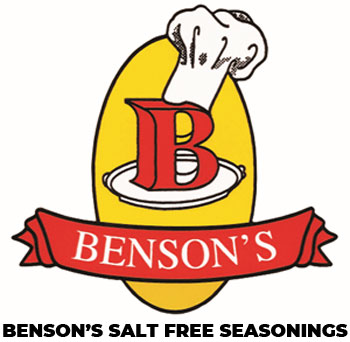When folks are first told to go on a low sodium diet, they think or maybe hope that means a low salt diet. However, a low salt diet is not the same as a low sodium diet. The term low salt diet makes it sound like you can still have salt, even if it is just a little bit. Whereas, low sodium diet is pretty much the same as a no salt diet, or a salt free diet, just more inclusive. A low sodium diet is not just counting the sodium in salt but includes sodium from all other sources, as well.
Some folks are just confusing the terms salt and sodium, thinking these terms mean the same thing. Salt is sodium but not all sodium is salt. For example, there is sodium naturally occurring in vegetables that is not salt. However, sodium is still sodium and must be counted as such, when calculating your daily sodium intake.
When most of us think of sodium we think salt, usually table salt. There are other common sources of sodium, especially in processed foods. Here are a few common ingredients to watch for:
- Monosodium glutamate / Msg – Flavor enhancer (Accent is 100% Msg)
- Baking Powder – Leavening agent (120 mg sodium per 1/4 tsp)
- Baking Soda – Leavening agent (150 mg sodium per 1/8 tsp)
- Disodium phosphate – Anti-caking agent
- Sodium alginate – As a thickener in soups and jellies
- Sodium nitrite or nitrate – Preservative helps retain color in meats and fish
The sodium in salt even just a little (thinking low salt) can add-up quickly. A teaspoon of salt is about 2400 mg of sodium. Divide that number by 4, (as a serving of salt is calculated as 1/4 teaspoon) and now you have 600 mg of sodium in your meal without even trying. So something that may be considered as low salt or low in salt can still be high in sodium.
A low sodium diet usually allows a daily sodium intake of 2,000 mg of sodium (or less), per day. A regular diet is allowed 2400 mg of sodium per day as you read on the nutrition labels. Just by reducing the sodium by 400 mg, you could be on a low sodium diet.
That doesn’t sound hard to do. The problem is the average person easily gets 2 to 5 times the amount of sodium they need (or more), everyday. Most of the sodium comes from eating highly processed foods like deli meats, condiments like pickles, fast food, frozen food, canned food, bread, cheese, even so-called heart healthy or low fat foods are usually high in sodium, not just from salt but also from ingredients like ones listed above.
It used to be that most of our sodium came by using the salt shaker at the table. The doctor just had to say “Take the salt shaker off the table.” More salt started being used in cooking. Either more salt was added during cooking to make the food tastier or saltier ingredients were added when cooking. Even if you are not adding salt, certain ingredients can send the sodium count through the roof. For instance, canned soups, canned broths, bouillon cubes, paste or powder, and packaged seasoning mixes are common additions to many home cooked meals.
Most folks have no idea about how sodium counting works. They just know they are not adding salt to their cooking or at the table and their blood pressure is still high. They may not be adding salt but their food is high in sodium (from other ingredients, some of which may have salt in them).
So when you are told to go on a low sodium diet, don’t think of it as a low salt diet. The terms are not interchangeable. Salt is just not allowed. Learn to eliminate salt period, not even a pinch. You don’t even need to salt the water for pasta, rice, potatoes, or oatmeal. This may be hard for you to do at first, but you can. The key is to prepare flavorful food using fresh ingredients, different types of herbs, spices and a variety of salt free seasonings.
Now you know not to use the term low salt diet when you really mean a low sodium diet.
